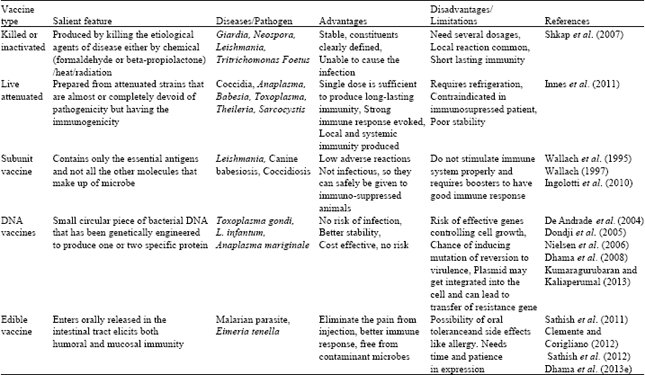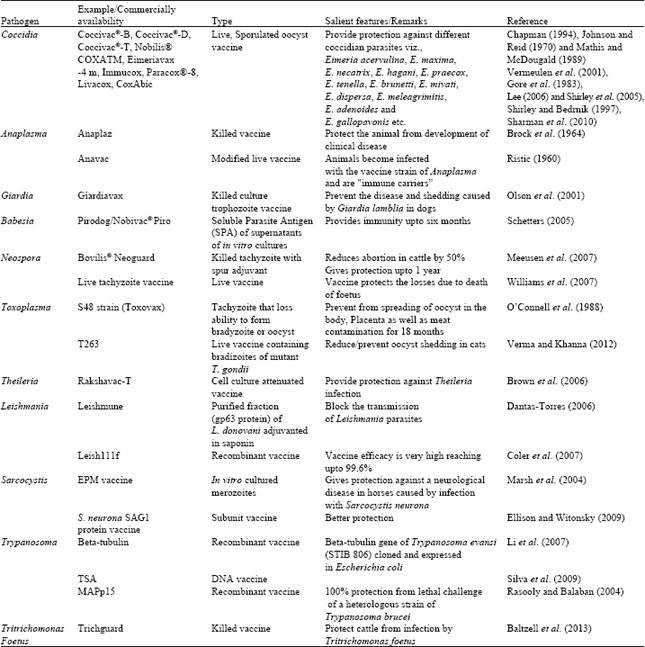Review Article
Trends and Advances in Vaccines Against Protozoan Parasites of Veterinary Importance: A Review
Department of Veterinary Parasitology, Vigyan Vishwavidyalaya Evam Go-Anusandhan Sansthan, 281001, Mathura (U.P.), India
A.K. Verma
Department of Veterinary Epidemiology and Preventive Medicine, Vigyan Vishwavidyalaya Evam Go-Anusandhan Sansthan, 281001, Mathura (U.P.), India
Neha
Department of Veterinary Epidemiology and Preventive Medicine, Vigyan Vishwavidyalaya Evam Go-Anusandhan Sansthan, 281001, Mathura (U.P.), India
Ruchi Tiwari
Department of Microbiology and Immunology, Uttar Pradesh Pandit Deen Dayal Upadhayay Pashu Chikitsa Vigyan Vishwavidyalaya Evam Go-Anusandhan Sansthan, 281001, Mathura (U.P.), India
K. Karthik
Division of Bacteriology and Mycology, Vigyan Vishwavidyalaya Evam Go-Anusandhan Sansthan, 281001, Mathura (U.P.), India
Kuldeep Dhama
Division of Pathology, Indian Veterinary Research Institute, Izatnagar, 243122, Bareilly (U.P.), India
S.V. Singh
Microbiology Laboratory, Animal Health Division, Central Institute for Research on Goats, Mathura, India










